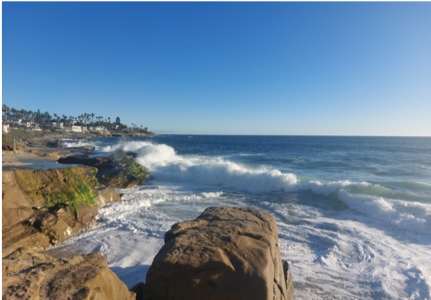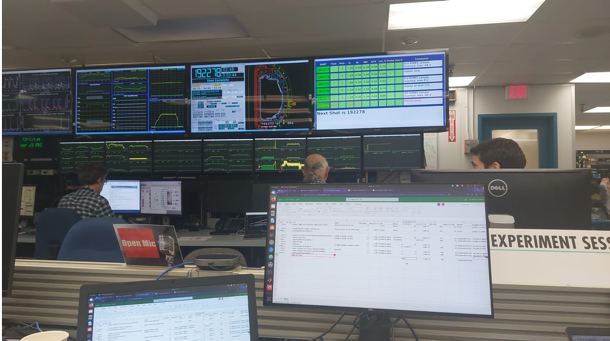Numerical modelling and validation of migration of tungsten eroded from SAS-VW divertor in DIII-D Tokamak.

|

|
| Nom | Laboratoire | Durée | Destination | Laboratoire d'accueil |
|
Stefano Di Genova 
|
M2P2 | 2 mois |
Etats-Unis, San Diego |
General Atomics, Theory and Computational Division |
Through the ISFIN mobility project, a research activity was carried out in collaboration with General Atomics (San Diego, CA, USA). The Goal was to compare the modelling performed with the suite of code SOLEDGE-EIRENE and ERO2.0 with the experimental evidences from DIIID tokamak and the modelling from the code SOLPS-ITER. The focus of the experiments and simulations was the performance of the Small-Angle Slot V-shaped Tungsten coated divertor (SAS-VW divertor). The particular interest in the SAS-VW divertor technology is the possibility of easily reaching the divertor detached regime to control the power and particles exhaust, and hence it is considered very important for engineering purposes. Particular attention was given to the impact of the plasma drifts on the divertor regime. This project gave the opportunity to discover the the diversity and the similarity between the European and the US way of researching, as well as the cultural differences. Not least, this project made it possible to visit the natural beauties of California.
SCIENTIFIC CONTEXT
My Ph.D. topic is focused on the numerical modelling of W migration from the tokamak walls to through the plasma. As the SAS-VW is coated by Tungsten, this was the occasion for testing simulations models on a machine different from the WEST divertor (object of the main part of my studies). DIIID is a tokamak machine considered to be a very import example of the fusion state of the art. It is also one of the machines with the most powerful diagnostic system, this characteristic makes it very interesting from the point of view of modelling validation.
The project lasted about a month and a half. The first week was dedicated to the data access training and to the modelling preparation. The second and the third week were dedicated to the modelling itself. The fourth week was passed in DIIID control room as preparation for the fifth week in which plasma experiments were followed. In the final week the results of the research activities were collected and presented at the General Atomic weekly meeting. Future projects were also discussed.
Long hikes on San Diego beaches, beautiful waves and Californian panoramas characterized this trip. The sunshine and the palms were always there to ease the stress of work, the hard work thought in terms of deliverable, results, and discussions. All together created a good positive mindset to perform research from which I learned an important lesson.

